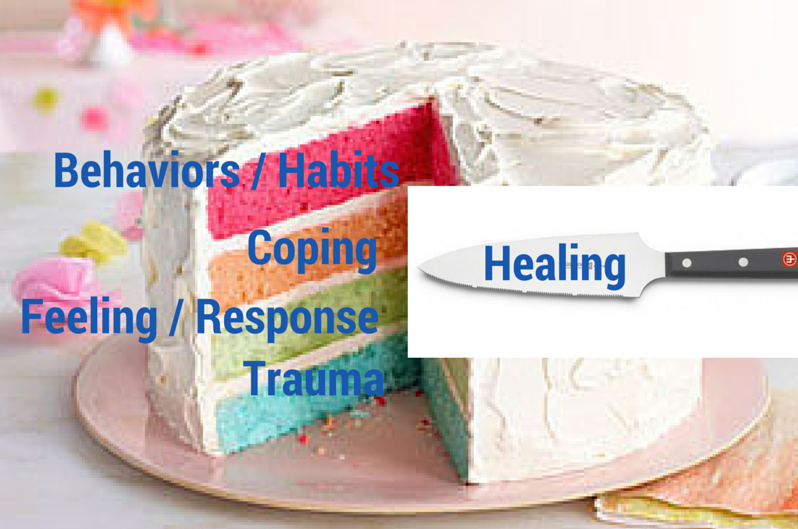You’ve heard the phrase, “Don’t bite the hand that feeds you.” Right? Are you following your own advice?
If eating is the only thing you do fast and quick during the day, this may be part of the reason you are gaining (or just not losing weight). I can hear you telling me the reasons: “I have limited time.”, “I’m always on the run.”, or “It’s a habit.” I get it.
But, the consequences are not feeling full, which means eating more, poor digestion, and eating too much because your stomach doesn’t have time to send the “time out” signal to your brain, and you don’t enjoy your food – food which hundreds of people have worked hard to deliver to your table.
Can you see the value in tasting your food? Can you remember the feeling of being full when you didn’t eat in a hurry?
And, if you are using food to cope with emotions and / or memories, then you are abusing both your body and the food.
So pretend there’s a speed bump up ahead. You would slow down wouldn’t you? You wouldn’t want to drive full speed ahead and bounce yourself senseless (although we’ve all done that when we were not planning for a speed bump to be there). And, if you kept driving full force over the speed bump? Just saying.
Here’s the “how-to-avoid-bouncing-over-a-speed-bump” type of eating:
First, realize you do not have anywhere to rush to and you are aware of the upcoming speed bump.
Week 1: From now on when you eat, consciously take small bites. No stuffing your face. Eat as much as you want but take small bites. It’s okay to have leftovers for snack time later.
Week 2: Keep taking small bites and chew these bites longer than you usually do. Try for 15-20 times a bite. Make a game out of it. Challenge yourself. Whatever it takes. Slow down and chew. Eat as much as you want but do this. Please schedule a few extra minutes for meal time than you usually would.
Week 3: Yummmmmy. Now that you’re taking small bites and chewing your food, really savor the taste of each bite. With each bite, determine if it is mostly sweet, sour, salty, or bitter. When we eat fast, we swallow without tasting. Now that you’re taking small bites and chewing longer, you will have a different experience from the simple act of eating. It’s magnificent. You may find that your favorite foods don’t taste as good as you thought they did. It was habit to eat them but not to taste them.
Week 4: You may be doing this already, but, if you’re not, make a conscious effort to swallow before taking the next bite. Conscious is the key word here. A pause. Like talking and having a period at the end of your sentence. You don’t quit talking but you can hear the pause. Now, taste the pause of eating.
Week 5: Now that you’re pausing between bites, take more sips of a no-calorie beverage. Drink your beverage the same way. Sips, not gulps. Enjoy the taste or refreshing feeling of the beverage.
Week 6: This is the book-end to your meal. At the beginning, rate or become aware of how hungry you feel. Give it a name: ravenous, mildly hungry, etc. About mid-way through your meal, raise your awareness of how your hunger is changing. At the end of the meal rate your hunger again. It’s part of the eating experience most people overlook. Like a wave, hunger rises and falls during the day. Wait for hunger to rise rather than eating by the clock, if you must. Get to know your rhythms. What times does your hunger show up? Go away?
**If you find it challenging to answer these questions and think you may need help, my free teleseminar may help you get to the root of things and get your answers. You can check it out here http://themuseskiss.com/loseweightforlifecall/.






